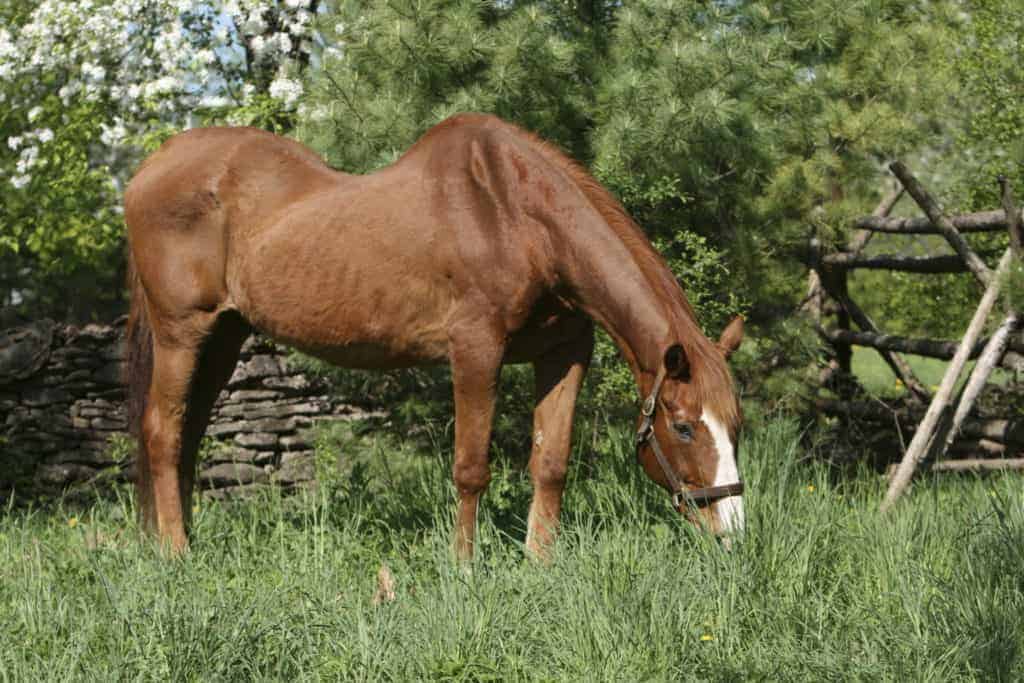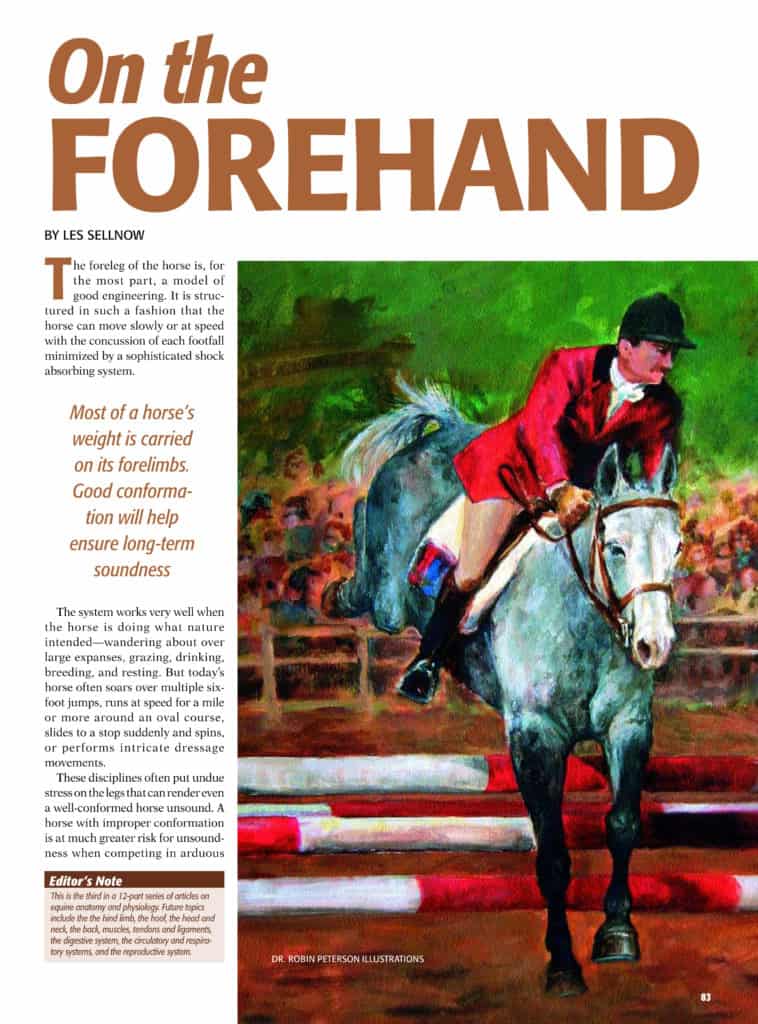
Poll Recap: Confounding Conformation
Of 766 voters, 29% said they worry most about buck or calf knees.

Of 766 voters, 29% said they worry most about buck or calf knees.

A single impact injury did not cause generalized osteoarthritis in the fetlock during the study period.
The colt was diagnosed with a peripheral nerve injury that caused atrophy in his left infraspinatus muscle.

One researcher described how to evaluate horses’ feet, legs, and gaits for potential soundness or lameness.
The 2012 program kicks off on Feb. 23 with “Managing Angular Limb Deformities in the Young Horse.”

MRIs picked up a wider range of abnormalities in some lame horses than did X rays or ultrasounds.
Horses have traditionally been considered obligate four-legged animals; however, the dogma is changing.

Clearly defined diagnostic criteria could help veterinarians detect BFS earlier and more accurately.
Be it for racing, reining, or riding, a horse needs to be put together properly; but does a horse need to be put together perfectly?
Researchers examined the effects of uneven feet on equine performance and linked this to other faults.
The equine carpal (knee) joint is a veritable puzzle of bones and sometimes a diagnostic enigma for veterinarians. Mike Ross, DVM, Dipl. ACVS, of the University of Pennsylvania’s New Bolton Center offered some insight to practitioners on working

The foreleg of the horse is, for the most part, a model of good engineering. Most of a horse’s weight is carried on its forelimbs. Good conformation will help ensure long-term soundness.

Learn how your horse’s anatomy works with our complete anatomy and physiology guide, including basic terminology, skin, forelimbs, hindlimbs, feet/hooves, head and neck, tendons/ligaments, muscles, digestive, cardiovascular and reproductive systems.
Want to know how your horse’s body works? Find out in The Horse’s 12-part Anatomy and Physiology series.
The foreleg of the horse is, for the most part, a model of good engineering. It is structured in such a fashion that the horse can move slowly or at speed with the concussion of each footfall minimized by a sophisticated shock absorbing system.
University of Wisconsin researchers have shown that certain forelimb characteristics in the growing foal are associated with higher birth weights, and a foal’s carpal (knee) conformation is associated with the carpal conformation of both of its
Stay on top of the most recent Horse Health news with
"*" indicates required fields